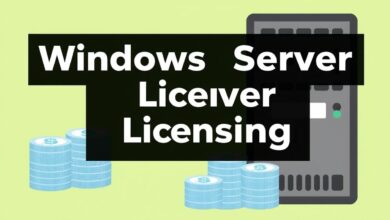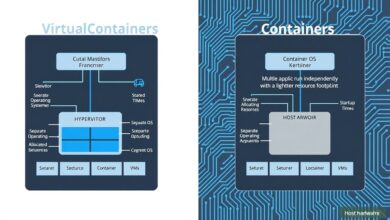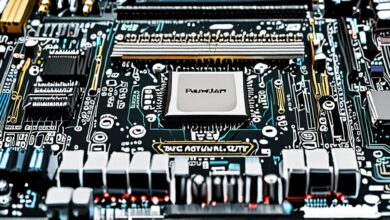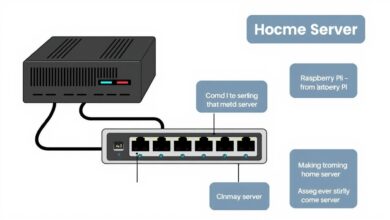Don’t Bite Off More Than You Can Cache: Setting Realistic Goals for Your First Server Project

Embarking on your first server project is an exciting step into the world of IT, networking, and system administration. Whether you’re building a homelab, setting up a simple file server, hosting a personal website, or creating a dedicated game server, the possibilities seem endless. However, this initial enthusiasm can quickly turn into frustration if you don’t start with a solid foundation. Setting realistic goals for your first server project is paramount to ensuring a successful and educational experience, rather than ending up with an expensive paperweight.
Why focus so heavily on “realistic” goals? Because overambition is a common pitfall for beginners. You might dream of building a complex, multi-functional server beast right out of the gate, but this often leads to overwhelming complexity, unexpected costs, and ultimately, project abandonment. Starting small and focused allows you to learn the fundamentals, build confidence, and incrementally add features as your skills grow.
Why Realistic Goal Setting Matters for Your Server
Setting clear, achievable objectives from the outset provides numerous benefits:
- Clear Direction: You know exactly what you’re trying to achieve, preventing aimless tinkering.
- Motivation: Achieving smaller milestones keeps you motivated and engaged.
- Learning Focus: It allows you to concentrate on learning specific technologies or concepts related to your goal.
- Budget Management: Realistic goals help you estimate hardware and software costs more accurately.
- Reduced Frustration: You’re less likely to hit insurmountable roadblocks if you start with manageable tasks.
Ignoring this crucial step can lead to “scope creep” – where the project continuously expands beyond its original objectives, making it difficult, if not impossible, to complete.
Using SMART Goals for Your First Server Project
A fantastic framework for defining your objectives is the SMART criteria. Let’s break down how this applies specifically to setting realistic goals for your first server project:
- Specific: Clearly define what you want your server to do. Instead of “build a cool server,” aim for “Set up a Raspberry Pi as a basic Network Attached Storage (NAS) device for backing up photos from my laptop.”
- What exactly do I want to accomplish? (e.g., File sharing, web hosting, media streaming)
- Who is this for? (e.g., Just me, my family, the public)
- What are the limitations? (e.g., Home network only, specific hardware)
- Measurable: How will you know when you’ve succeeded? Define clear success criteria. For the NAS example: “Success means I can access a specific shared folder on the Raspberry Pi from my laptop over my home Wi-Fi and copy files to it.”
- Achievable: This is where realism is key. Do you have the necessary skills (or the time to learn them), budget, and hardware? Starting with a simple file server on an old PC or Raspberry Pi is far more achievable for a beginner than deploying a multi-node Kubernetes cluster. Research tutorials, hardware requirements, and software options before committing.
- Relevant: Does this project align with your interests and learning objectives? Are you genuinely interested in network storage, or are you just following a trend? Ensure the project serves a purpose for *you*.
- Time-bound: Set realistic deadlines for yourself. “I will have the basic NAS functionality (folder access and file transfer) working within two weekends.” This creates urgency and helps track progress.
Common First Server Project Ideas (and Realistic Scopes)
Let’s look at some popular first server projects and how to scope them realistically:
1. Network Attached Storage (NAS)/File Server
- Realistic Goal: Set up a server (using an old PC, Raspberry Pi, or dedicated NAS hardware) to share files across your home network. Focus on basic user access and folder permissions.
- Avoid: Trying to implement complex RAID configurations, off-site backups, or advanced multi-protocol access (NFS, SMB, AFP) all at once.
2. Personal Website/Blog Hosting
- Realistic Goal: Install a web server (like Apache or Nginx) and host a simple static HTML page or deploy a basic WordPress site accessible only within your home network first. Later, tackle domain names and making it public.
- Avoid: Immediately trying to host high-traffic applications, e-commerce sites, or setting up complex SSL configurations without understanding the basics. Consider security implications carefully before exposing anything to the internet.
3. Media Server (Plex/Jellyfin)
- Realistic Goal: Install media server software (like Plex or Jellyfin) on a suitable machine and stream media already stored on its hard drive to one or two devices on your local network.
- Avoid: Expecting flawless 4K transcoding on low-power hardware or trying to manage massive libraries and remote access from day one.
4. Game Server
- Realistic Goal: Set up a dedicated server for a specific game (e.g., Minecraft, Valheim) for a small number of friends, running on your local network initially.
- Avoid: Trying to host multiple game servers simultaneously, supporting a large number of players, or implementing complex mods without understanding resource requirements (CPU, RAM, Network).
Planning and Execution
Once you have your SMART goal:
- Break it Down: Divide the goal into smaller, manageable tasks or milestones (e.g., 1. Install OS, 2. Configure networking, 3. Install server software, 4. Configure sharing, 5. Test access).
- Research: Gather information and tutorials for each step. Look at documentation for the software you plan to use (e.g., Ubuntu Server Documentation or Raspberry Pi guides).
- Document: Keep notes of your steps, configurations, and any problems you encounter. This is invaluable for troubleshooting and future projects.
- Execute & Monitor: Start working through your tasks. Test frequently. Don’t be afraid to backtrack if something isn’t working.
- Review & Adapt: If you hit a major roadblock, reassess. Is the goal still achievable? Do you need to adjust the scope or timeline?
Setting realistic goals for your first server project isn’t about limiting your ambition; it’s about channeling it effectively. By starting small, focusing on learning, and using frameworks like SMART, you set yourself up for a rewarding experience that builds a solid foundation for future, more complex endeavors. Ready to plan your build? Check out our guide to choosing hardware for your first homelab.




